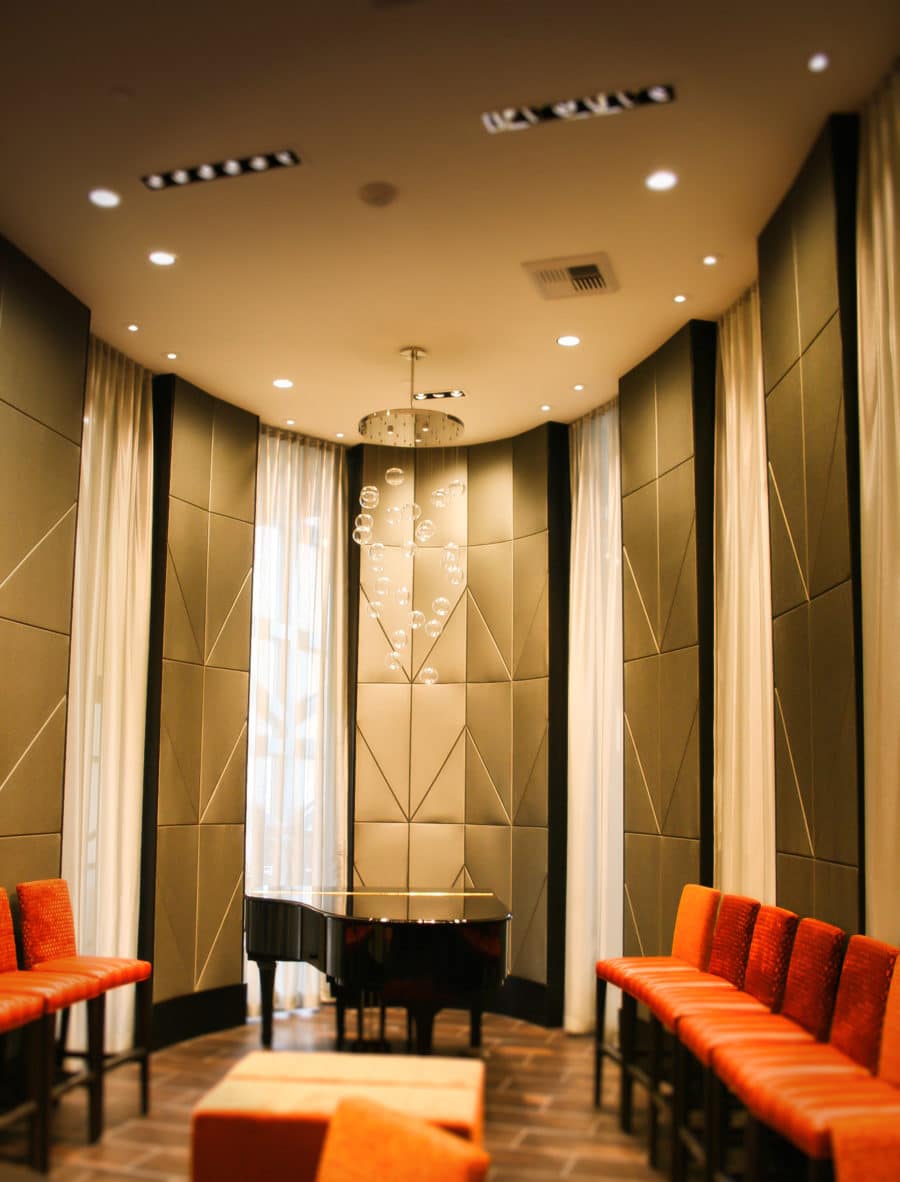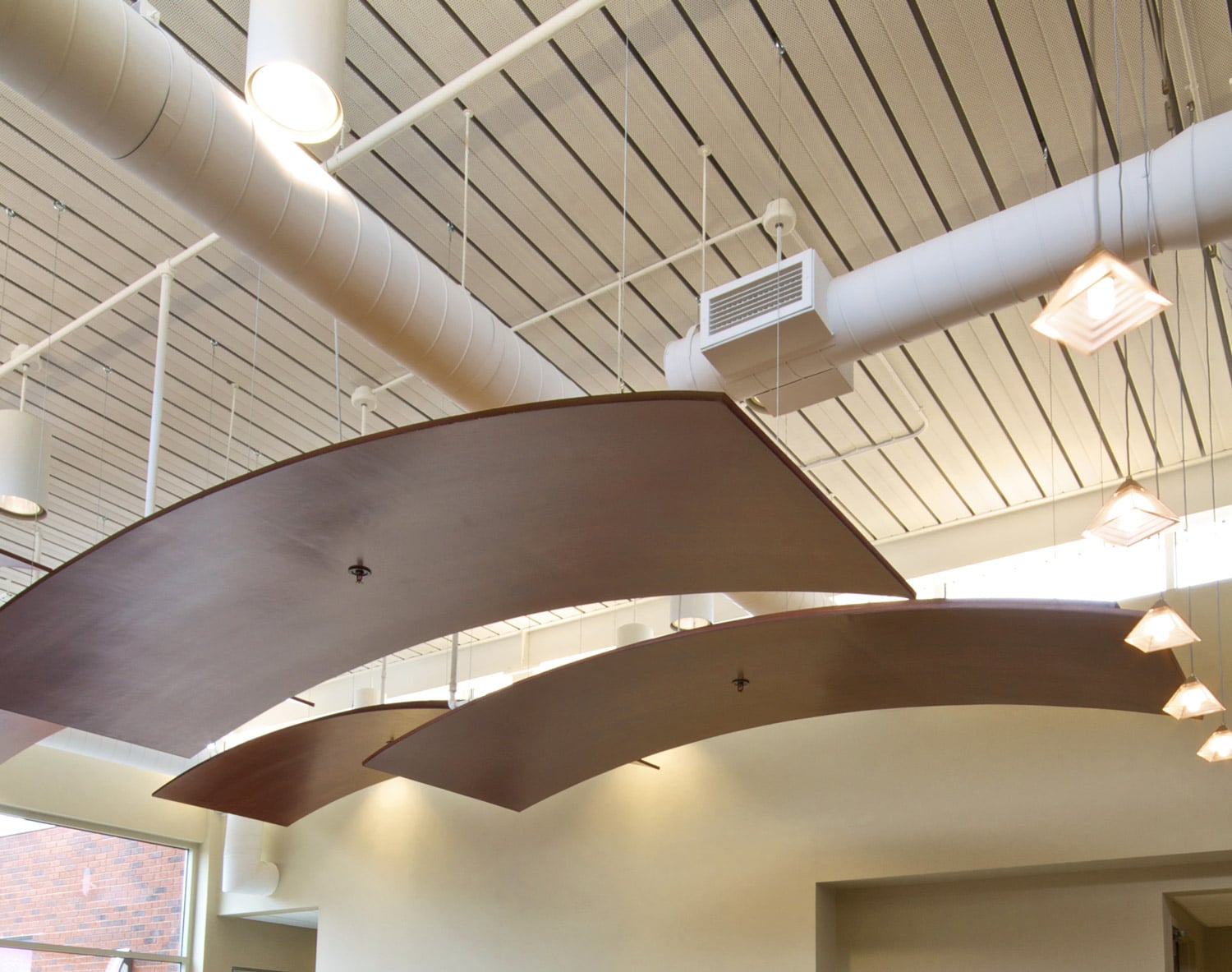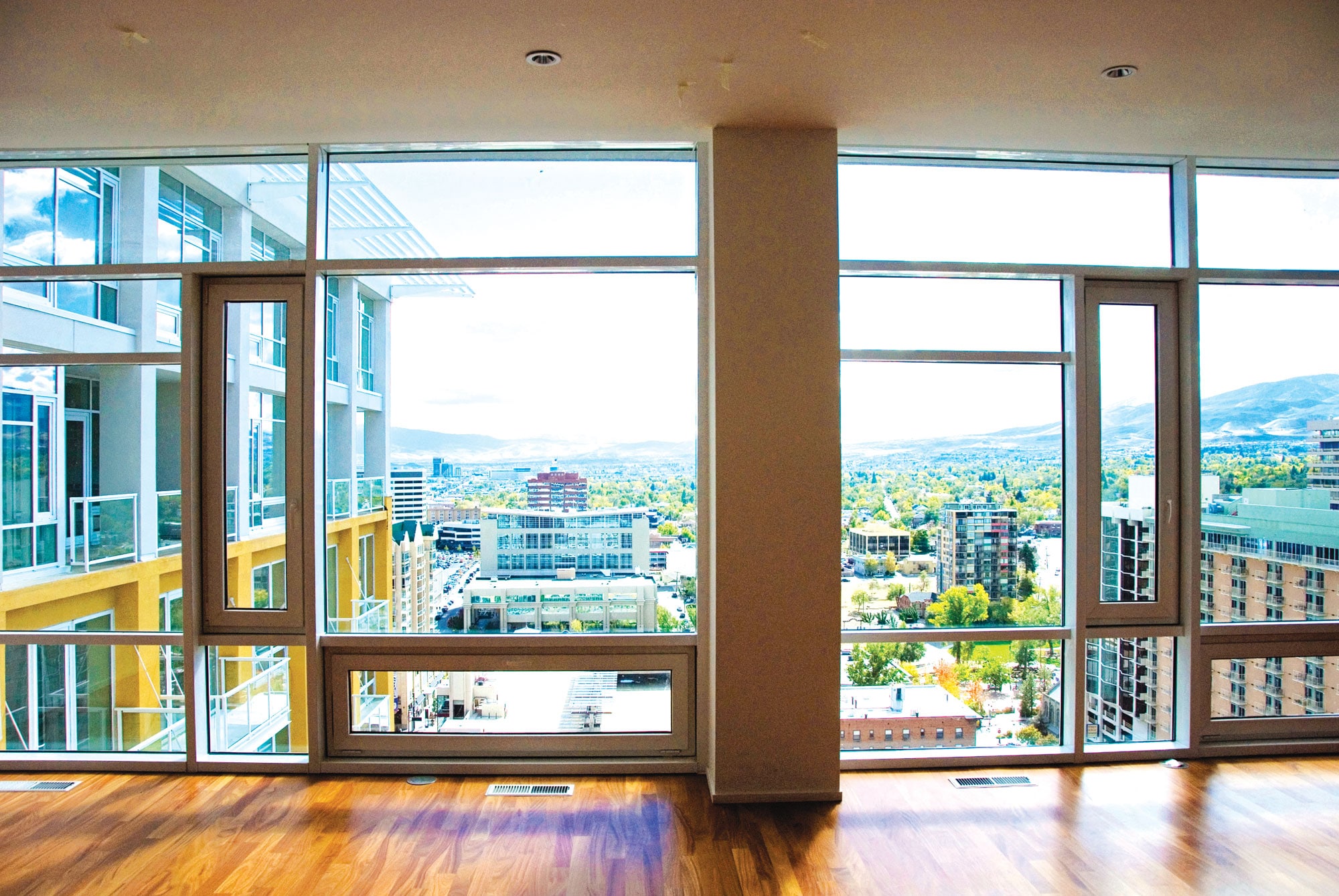Story at a glance:
- Acoustic design in architecture can go beyond function to be aesthetically pleasing and sustainable.
- Experts advise you consider acoustics at the beginning of design—not afterward.
- Sound-dampening fabrics can absorb 75 to 95% of reflected sounds and are one of many acoustic solutions.
Honking cars outside the window, an officemate making coffee, conference calls—the possibilities for noise disruption are endless. Acoustic design in architecture can help mitigate these frustrations caused by external noise pollution and competing internal noises within a space, and yet, so often, acoustic design is overlooked.
Growing research has suggested that both children and adults can suffer as a result of noise exposure. Noise exposure has been linked to poorer reading comprehension and standardized test scores in children, according to a 2018 World Health Organization analysis. A study published in The American Journal of Industrial Medicine in 2018 concluded that as many as 14% of cases of hypertension and 9% of cases of high cholesterol were potentially a result of noise exposure.
These nine tips on how to successfully incorporate acoustic design in architecture show that acoustics can be simultaneously aesthetically pleasing and a cost-effective priority.
1. Consider where the loudest noise occurs in your home or office

A collaborative workspace of tables and chairs beneath a thoughtful placement of FSorb Silentline Ocean baffles. In the kitchen, there is a lack of acoustical materials because it is intended to be livelier. Photo courtesy of FSorb
Considering acoustic design architecture is often an afterthought in design, tight budgets also make it difficult to address acoustics. “Situational acoustic design” can help you save money, time, and material by locating where the loudest noise occurs.
Rather than overspending on materials, find where people tend to commune. For instance, in an office space, teams may be working side-by-side in an open office space. Ceiling materials can be placed directly overhead in patterns that block and diffuse competing sounds.
“This situational acoustic design approach, where the panels are placed in targeted, noisy areas, can create a nice break in sound from one team’s space to the next. The point is to simply absorb the sound where the noise source is,” Doug Bixel, CEO of wall and acoustic product company FSorb, wrote in a previous submission to gb&d.
2. Soundproof your walls
Companies like Greenfiber offer a wide array of options for soundproofing your walls. Fiber insulations can be blown-in or spray-applied to multiple types of walls, floors, and ceilings. Soundproofing your walls with an insulator not only helps with noise reduction—it can help with normalizing temperatures and improve indoor air quality.
Greenfiber uses a low-energy manufacturing process for their insulation products. Furthermore, the application process generates little to no waste or byproducts because the company leverages recovered material to start with. Greenfiber reuses upcycled paper as insulation and has diverted approximately 160,000 tons of paper from landfills.
3. Apply wall and ceiling boards

National Gypsum offers wall and ceiling boards that can be applied to the existing structure, eliminating the need for demolition. Photo courtesy of National Gypsum
Want to reduce unwanted noise traveling from one room to another? Try installing ceiling and/or wall boards like these from National Gypsum. The best part is you don’t have to demolish any walls to apply these boards.
National Gypsum has created a “family of products” to address noise issues. These include the SoundBreak XP Wall Board, which is installed between walls and can help protect your walls against moisture, mold, and mildew. Another noteworthy sound board is their SoundBreak XP Retrofit Board, which allows users to apply it over existing walls.
4. Use wall and ceiling fabrics to spruce up a space while dampening sound

FabriTRAK adds life to acoustic design through a variety of sound-dampening fabrics that come in different colors and textures. Photo courtesy of FabriTRAK
Fabric treatments for walls and ceilings are both beautiful and helpful in reducing unwanted noises in a busy room.
FabriTRAK’s line of sound-dampening fabric treatments for walls and ceilings work to absorb anywhere from 75 to 95% of reflected sounds. In addition, designers who use FabriTRAK’s wall fabrics can achieve strong acoustics without sacrificing beauty, thanks to many color and texture combinations.
“No one likes to speak above a certain octave level,” said Lou D’Angelo, president and CEO of FabriTRAK, in a previous interview with gb&d. “You need to modulate sound by having a material finish that absorbs reflective sounds and makes a room pleasant to speech.”
5. Make it beautiful

Adding in a company or team logo can spruce up acoustic design. Photo courtesy of Overtone Acoustics
The most important thing you can do to make your acoustic design architecture seamless is to consider it during the design phase—not afterward. There are many appealing options when it comes to acoustics, but often designers don’t consider these.
Overtone Acoustics, a professional sound solutions company, suggests using materials like custom panels adorned with art, perforated wood veneer, or fabrics of any kind. Even images or company logos can be added to acoustic paneling to go beyond function alone.
6. Incorporate steel decks in your ceiling

Acoustic design doesn’t have to be boring: steel decking can bring personality and depth to a space. Photo courtesy of New Millennium
Acoustical steel decking is a great sustainable option for large, open-space designs like classrooms, auditoriums, or sporting arenas.
Exposed steel decks can not only save money by avoiding lay-in ceiling tiles, but they are also flexible and sustainable. The steel building company New Millennium Building Systems maximizes efficiency through their long-span acoustical steel deck—the Versa-Dek®.
New Millennium’s steel decks are long-span, allowing for fewer structural members to be required, leading to fewer materials, less fabrication, and less waste. Steel is also North America’s most recycled material, and steel decking has post-consumer recycled content that can exceed 70%.
7. Think about acoustic zoning

Glass walls and acoustic separation encourages collaboration and community while allowing people places to go for privacy. Photo courtesy of M Moser Associates
Proper acoustics can foster community by allowing contrasting noises to occupy—and thrive in—the same space.
Successful acoustic design in architecture must take into account acoustic zoning: when design details simultaneously support a full spectrum of sound. Acoustic zoning takes into account that singular spaces may be used for different needs when working, learning, or living.
Workplaces and homes both need a balance of communal and private areas. Thus, sound transmission has to be carefully considered to instill a sense of safety and comfort in a community.
Just a few examples of noise-reduction tools include sound-absorbing materials, air gap technologies, best practice wall construction, and laminated/insulated glass enclosure solutions.
8. Insulate or laminate your glass windows

Insulated glass regulates temperature and dampens sound, offering the seal like that of an airplane window. Photo Courtesy of REHAU
A growing body of research shows noise pollution is a real threat to health and well-being. Many children who live near noisy airports or streets have been found to suffer from stress and other problems, including impairments in memory, attention level, and reading skill, according to National Geographic.
Insulated windows and/or laminated glass can help solve this noisy problem.
Insulated glass units are basically multiple layers of glass panes that are sealed together. REHAU’s window frames are designed to incorporate insulated glass, which regulates temperature and dampens sound, offering the seal like that of an airplane window.
An alternative to insulated glass, laminated glass is well-known for its safety and security due to its hardness, however, it is also an effective barrier for sound. Laminated glass consists of two glass panes with an interlayer sandwiched in between, creating a distinctive noise reduction benefit. Typically made from polyvinyl butyral, or PVB, it has vibration dampening properties.
9. Install isolation material between the structure and foundation walls
For buildings in bustling areas—like architectsAlliance’s 55-story Clover on Yonge residential building in Vancouver—acoustic design has to be a top priority.
That’s why REGUPOL installed isolation material installed between the walls of Clover on Yonge. REGUPOL created recycled rubber flooring and carries a full line of acoustic underlayments. Their Vibration 450 material is made from 93% recycled content and was designed to decouple the building from the foundation, greatly reducing the transmission of noise and vibration.




